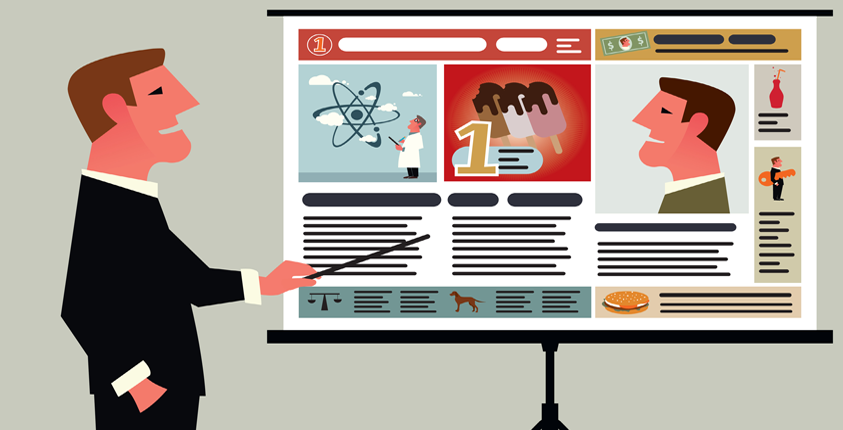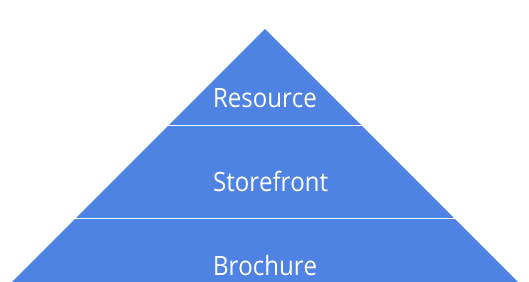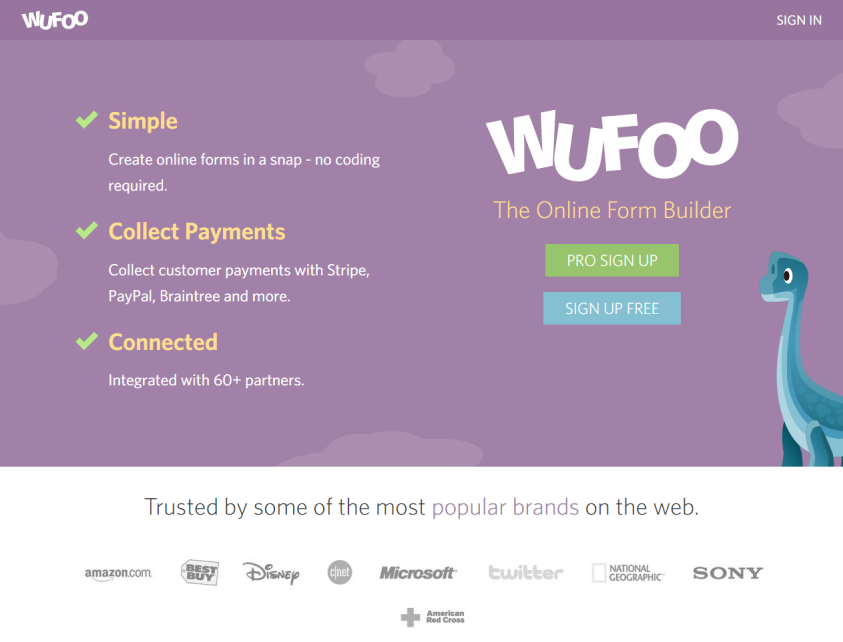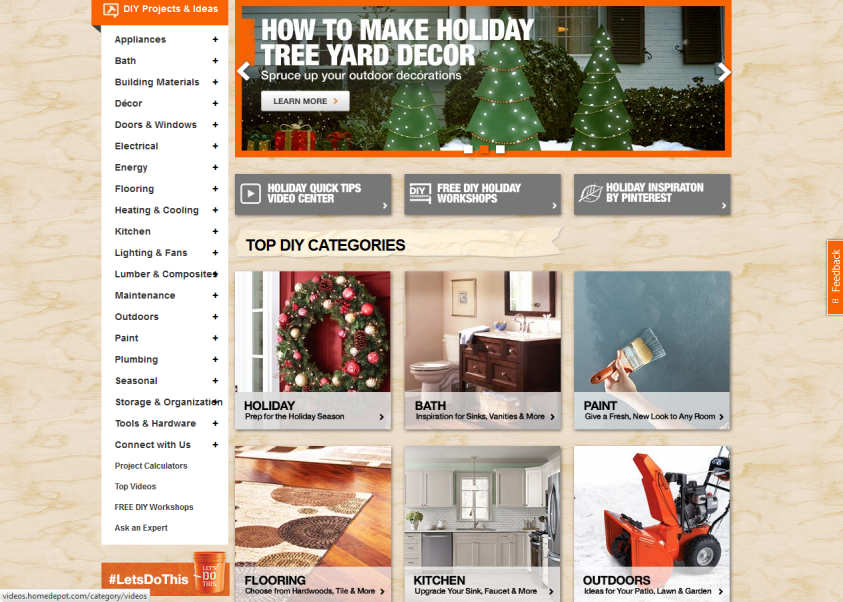Website Boot Camp Part 1: Website Purpose

Once you decide you need a website (or need to improve the website you have), it’s natural to want to get right to work. But the first step for building a great website, before you do any designing, copywriting, or coding, is to know the purpose of your website.
Ask yourself these questions:
— What is the overall purpose of this site?
— What do you want it to do for your customers?
— What do you want it to do for your business?
— What do you want potential customers to see and/or do when they visit the site?

We’re going to walk you through three levels of website purpose: as a brochure for your business, as a storefront for your products, and finally as a resource for your visitors. We’ll start with the fundamentals and then move up to the highest goals you can set for a website. A great website excels on all three levels.
Website as a Brochure
The first, most fundamental purpose of a website is to provide information about your business. That is, it essentially serves as an online brochure. The website is there so that when people drive by or hear about your business, they can search for your business’s name and then learn about what you do. It’s an easy way for anyone to get more information about you, anytime.
Most consumers today like to research a business online before trying it out for the first time. If they can’t find the business online, then they are likely to skip it and move on to a competitor who is online. So it is vitally important to have a website that gives at least the essential information about your business. Answer the 5 W’s (and H): Who, What, When, Where, Why, and How? For the customer who had initial interest, visiting your website should provide all the necessary information to make a decision on whether your business is the right one for them—can you solve the problem they have, are you the man (or woman) for the job? The website drives customers, whether it’s people walking through the door or phone calls or inquiry emails.
At its most basic level, your website needs to have information about your business, information that customers would want to have before deciding to do business with you. Here’s an example of a website that does this well.

Wufoo.com, a do-it-yourself form creation site, does a great job of using their homepage as a brochure. When you land on this page you quickly see 3 reasons why you should choose Wufoo and you also see other brands that are already using the service. There is also a clear call to action to sign up for a plan (whether you choose free or paying) front and center.
Website as an Online Storefront
While website-as-a-brochure is an important fundamental, too many websites both start and end there. They serve no further purpose. You want your website to do more than that—both because a website is capable of so much more, and because your customers want and need so much more. The next level of your website’s purpose is to be an online extension of your store.
Now this might mean literally setting up eCommerce functions and selling goods and services online, or it might mean using your website to list and display specific products and services for customers who then do business with you in your store or by contacting you. At this level, you are doing more than just giving a general overview of your business; when a customer understands what your business is and what you do, the next thing they want is to know specifically what you can offer them (and how much it’s going to cost them). If you want to add eCommerce functions to close the deal right there online, that’s great, but the important thing is helping prospective customers find the exact solution they need for the problem they have, beyond a bird’s-eye perspective of “We do things like that.”
Amazon.com is a great example of a website as a storefront. Let’s look at their ‘Books’ page.
 Amazon.com is one of the most well-known sales sites in the world. There is no confusion as to the purpose of this page — selling books. Notice what is included for each product- pricing and average customer ratings. When it comes to online sales there is nothing as valuable as online customer reviews — people trust other people (especially their friends or others close to them) much more than any marketing message.
Amazon.com is one of the most well-known sales sites in the world. There is no confusion as to the purpose of this page — selling books. Notice what is included for each product- pricing and average customer ratings. When it comes to online sales there is nothing as valuable as online customer reviews — people trust other people (especially their friends or others close to them) much more than any marketing message.
Website as a Customer Resource
At the highest level of a website, though, it’s no longer just about you and your business and your products and services. The highest, most valuable purpose a website can serve is as a resource center for your visitors. That might sound counterintuitive. At its most literal, after all, this isn’t necessarily about selling anything. But under the surface, it’s establishing your business—and you in particular—as an expert, as someone who is helpful, as a trustworthy member of the community and an industry leader. In short, it establishes you as someone who is worth spending money on.
To reach this level, you have to think about the problems your customers have, and the information they would like to know. If you deliver that information, and become a helpful resource they can turn to whenever they have questions in your field, they are more likely to come to you when they are ready to do business in your area of expertise. You’ve created top of mind awareness and a stellar reputation. By giving away some of the information you have about industry trends, do-it-yourself tips, and relevant community happenings, you create a loyal following who are visiting your website and will turn to you before anyone else when they decide they need a professional’s help.
Reaching this level requires commitment, but when a website achieves it, the results can be remarkable. And best of all, search engines love websites that reach this level, too, sending even more traffic to your website to learn about your business and do business with you. It’s a virtuous cycle where a good website keeps getting more and more visitors.
Home Depot does a great job of this with their ‘DIY Project and Ideas’ page. Let’s take a look.
 Home Depot’s DIY Projects and Ideas page is a great example of a website being used as a resource. We all know Home Depot’s primary goal — to sell their products. This is addressed on their homepage (which could have also been used under the ‘Website as a Storefront’ heading). By creating the DIY Projects page, they are able to encourage return visits to their website. Increased site exposures can lead to increased purchases through the website. Home Depot also encourages people to visit their stores for their free DIY workshops.
Home Depot’s DIY Projects and Ideas page is a great example of a website being used as a resource. We all know Home Depot’s primary goal — to sell their products. This is addressed on their homepage (which could have also been used under the ‘Website as a Storefront’ heading). By creating the DIY Projects page, they are able to encourage return visits to their website. Increased site exposures can lead to increased purchases through the website. Home Depot also encourages people to visit their stores for their free DIY workshops.
Building a website that hits on all three levels is the best path to strong online results. Identify how your website can outline and explain what your business is, how to use it as an extension of your store, and what ways you can provide valuable information, knowledge, and resources to visitors.
Is your site firing on all cylinders? Click here for an online audit of your website and be sure to check back for next week’s Boot Camp lesson on website design.
Before next week’s lesson, think about these questions:
✓ Is your purpose clearly defined?
✓ Website as a brochure – can customers find the information they need on your website?
✓ Website as a storefront – can a customer buy or find information about a product online?
✓ Website as a resource – how do establish your business?
We build websites so you don't have to.
Learn more about our custom design services.
